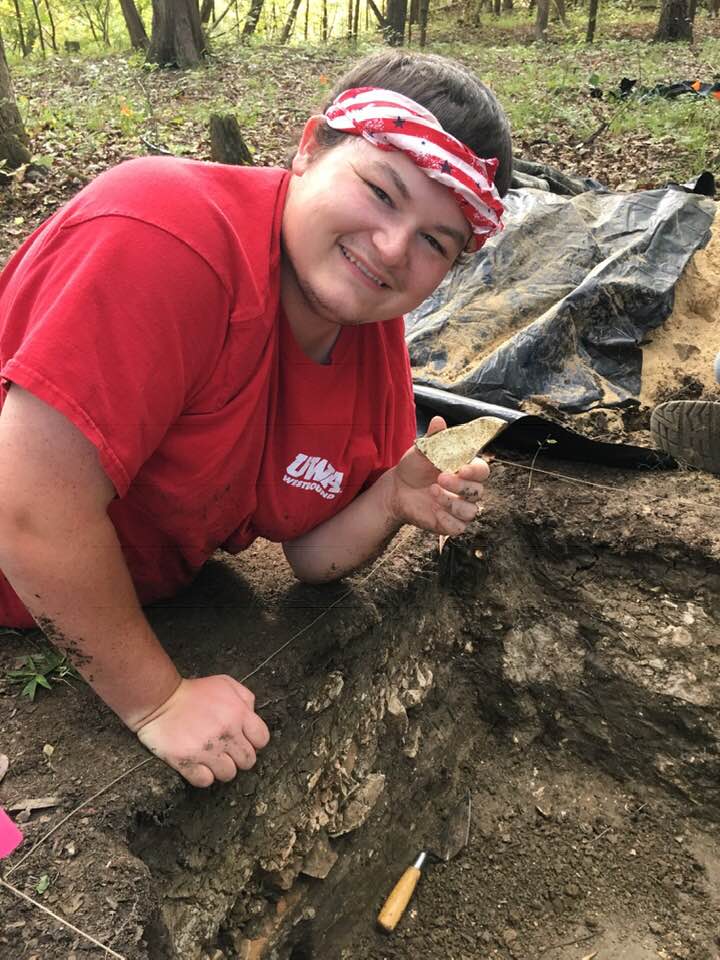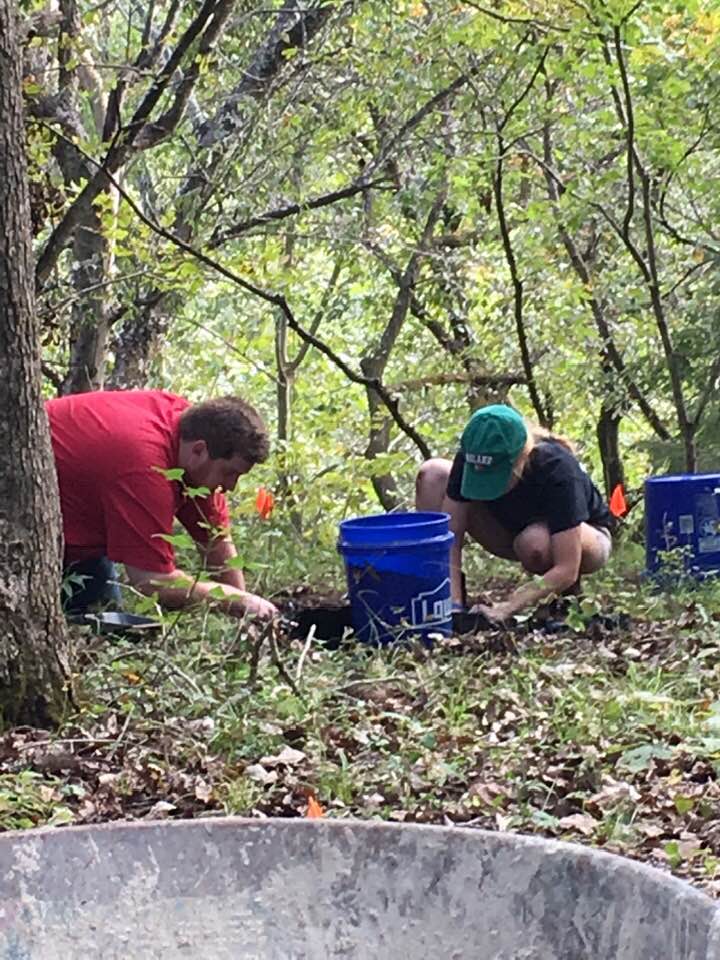Field Blog for October 18
by Sarah Coffey
This week we were only working at the Fort on Thursday, due
to Tuesday being Assessment Day and classes being cancelled. On Thursday,
Daniel and I dug a shovel test five meters north of a previous shovel test that
had produced a wrought nail. This was labeled Shovel Test 26. No artifacts were
found, as the chalk subsoil was only about 15 centimeters below the surface. There
is only a light scattering of artifacts, none really near one another, in this
area west of the fort, which tells us there may not have been any structures or
many activities there. While we worked on this, Michael and Sparky started
digging out the backfill on Unit 201 around the Barracks. (See the Virtual Tour
part of the website for a map of where we are in the fort.) The backfill was
from a 2014 dig and it is industrial (sterile) sand, so it was easy to see
where the edge of the unit was compared to the sand. Unit 201 was previously
dug through 2 or 3 layers of artifact-rich soil and Michael and Sparky will
continue working on excavating the other layers until they reach the chalk
subsoil. This unit is of particular interest because it is where the 1790’s Spanish
earthworks cover the earlier French and English-period Barracks location. The earthworks
protected the location of earlier artifacts that may be under the Spanish earthworks.
The 2014 dig ended before the excavators could finish excavating all the
layers, but they did find pieces of a French platter. All pieces were from the
same platter, and today Sparky found another piece that seems to also belong
with the platter.

Once Daniel and I finished the shovel test, we moved to Unit 212 around the Barracks, due South of Unit 201 that Michael and Sparky were working in. After raking and clearing as much debris we could, we measured out a 1 meter by 1 meter square, referred to as a unit, and marked the four corners. After marking the corners, we started scraping the soil with trowels and only got a couple centimeters deep before we had to leave for the day. The soil is pretty hard and has a clay texture, so the first layer of this unit will be difficult the dig. In 2014, the edge of a builder’s trench was found here. The trench seems to be running east to west along the edge of the ravine and may have been a trench for a palisade wall to protect the south part of the fort. By digging Unit 212, we are hoping to find the rest of the trench.
